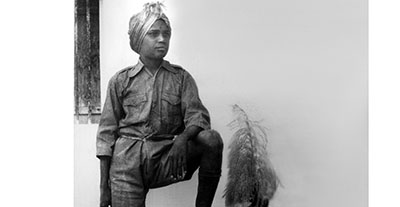
In 1921, seven-year-old Ramu asked his father if he could accompany him to the conference, not only to listen but to give a short talk as well. At these spiritual conferences, there was no strict rule about who might or might not speak. If the leaders of the conference agreed, anyone who applied could give a talk. His father decided on the topic of nonviolence, ahimsa, covering the important points. Then he made arrangements to place his son’s name on the speakers’ roster. Ramu was scheduled to speak on a day when Subbiah Swamigal, a particularly well-known swami, would preside as chairman. Actually, the swami’s full name was much longer and quite complicated. Ramu practiced and practiced—not only his talk, but the correct pronunciation of the monk’s name as well.
At Perur, the hour arrived. He felt thoughtful, rather than nervous. Subbiah Swamigal read from the schedule, “Now, Ramaswamy will deliver a lecture on ahimsa.” He smiled at the tiny form of his guest lecturer, who was mounting the platform with such a serious expression. He was the youngest speaker in the history of the conference. “First of all,” a loud, high voice declaimed, “let me offer my humble salutations to the chairman of this session, Sennai Sri Jagathgurupidam Nayachandra Vedanta Bhashkara Srimath Mahamandaleshwara Veerasubbiah Jnana Desikendra Swamigal and to you all.” The perfect recitation of this complex name drew a prolonged round of applause. The swami had never expected such eloquent speech from a child. Embracing Ramu warmly, he lifted the boy onto his lap and instructed him to give the talk from that position. As long as Ramu lived in that area, he was a guest speaker at the conference.
Ramaswamy joined the Cub Scouts and eventually became a Boy Scout. He entered Sarvajana High School, living in the youth hostel set up for the students in Peelamedu, a neighboring village, and went home about once a month. Then he attended upper high school at the government art college in Coimbatore.

Recent Comments